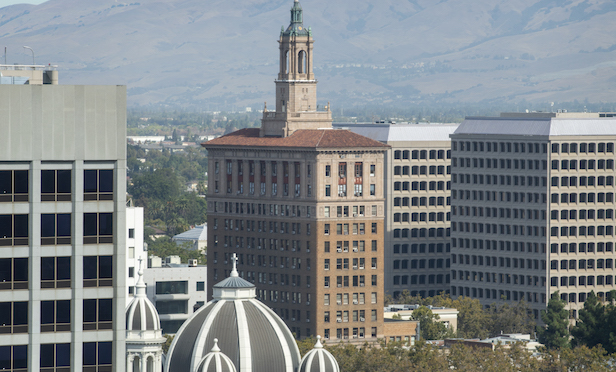 Downtown San Jose; the city and the surrounding Silicon Valley have seen double-digit rent growth. (Photo: Team San Jose)
Downtown San Jose; the city and the surrounding Silicon Valley have seen double-digit rent growth. (Photo: Team San Jose)
CALABASAS, CA—The US office sector at midyear is poised for continued growth, Marcus & Millichap says in a new report. Thanks to ongoing expansion in a number of office-using employment sectors as well as a slower pace of new deliveries, the national vacancy rate is expected to keep ticking downward while rent growth is expected to average 3.9% for the year—and considerably more in tech hubs.
The report notes that office-using employment recovered early following the downturn and is now up by 1.8 million workers over the pre-recession peak. While professional and business services remains the largest office-using employment sector, Marcus & Millichap sees an incremental lift in demand coming from other industries.
“Local government agencies hired an additional 43,000 workers in the first five months of this year; payrolls could continue to expand in the months ahead as revenues from retail sales and building permits grow in an expanding economy,” according to the firm’s Office Outlook Summer 2016 report. In the healthcare arena, more than 100,000 positions were created during that time in ambulatory care services, a principal driver of demand for medical office space. “Additional growth in staffing will occur as more workers acquire employee-sponsored health insurance, generating needs for additional space.”
Some of that additional space will come from new construction. However, although Marcus & Millichap expects about 79 million square feet to be delivered over the course of 2016, or nearly 18% more than the 67 million square feet that came on line last year, the annual pace of development still lags the pre-recession peak.
“Construction volume remains conspicuously light at this point of the cycle; an average of 109 million square feet was placed in service annually in the three years leading up to the recession,” the report states. A drag on new space demand, and thus on development, may be coming from cloud computing and arrangements that allow more employees to work remotely.
In addition, the report notes that co-working spaces, such as those offered by WeWork, continue to grow in popularity. This past January, Newmark Grubb Knight Frank reported that WeWork’s pending and active leases in New York City alone totaled some 2.8 million square feet. “Co-working spaces, similar to executive suites, are a common choice among independent workers, but the concept is gaining traction among large corporations with flexible staffing needs,” according to the Marcus & Millichap report.
Vacancies nationwide declined 20 basis points year over year to a nationwide average of 15.1% at the end of the first quarter. The San Jose metro area was a stellar performer in terms of declining vacancies; however, Marcus & Millichap notes that other tech strongholds, such as Austin, Seattle and San Francisco, have seen more varied results lately. Meanwhile, headquarters metros such as Dallas/Fort Worth and Minneapolis/St. Paul have recorded substantial growth in occupied space as additional hiring continues generating new demand.
San Jose was also a star performer in rent growth over the past year; it posted double-digit gains, in common with San Francisco to the west and Orange County to the south. More broadly, Marcus & Millichap notes that the pace of rent growth nationally is accelerating: the most recent 12-month period saw a 4.5% Y-O-Y increase, compared to just 3.3% the year prior. On a metro-by-metro basis, nearly all have seen rents grow over the past four quarters.

















 Copyright © 2024 ALM Global, LLC. All Rights Reserved.
Copyright © 2024 ALM Global, LLC. All Rights Reserved.